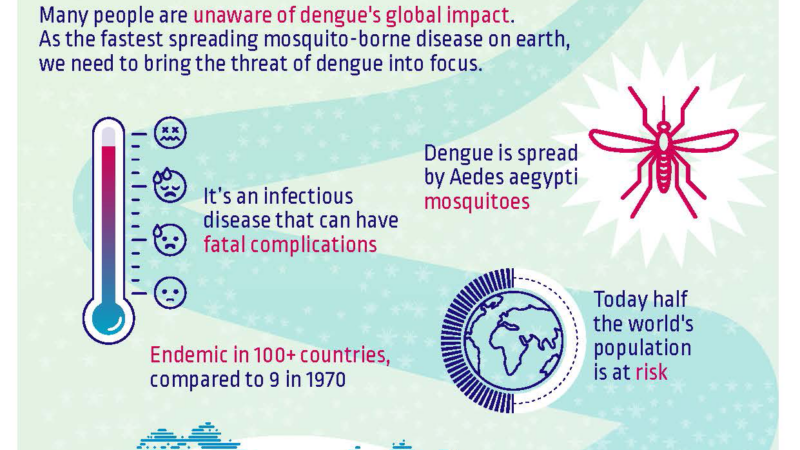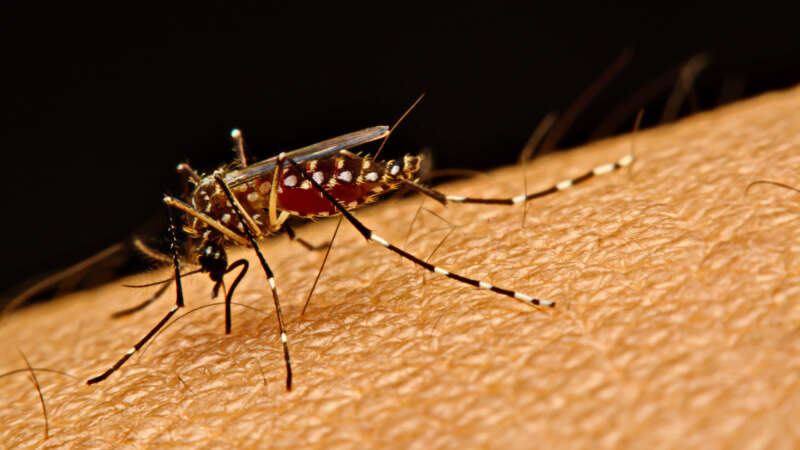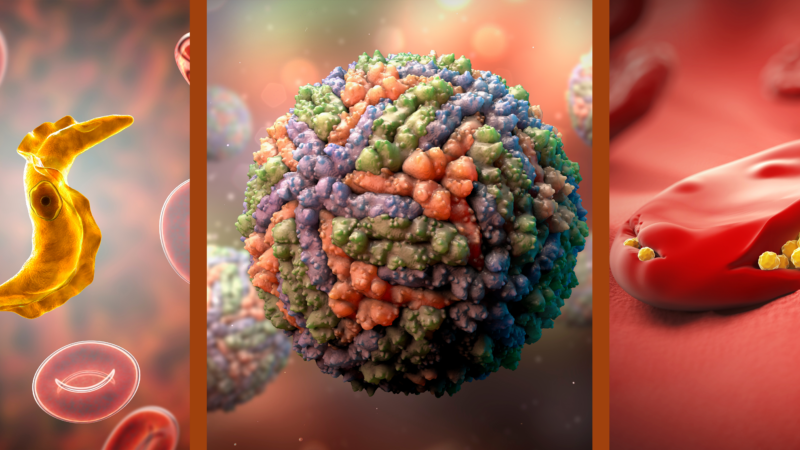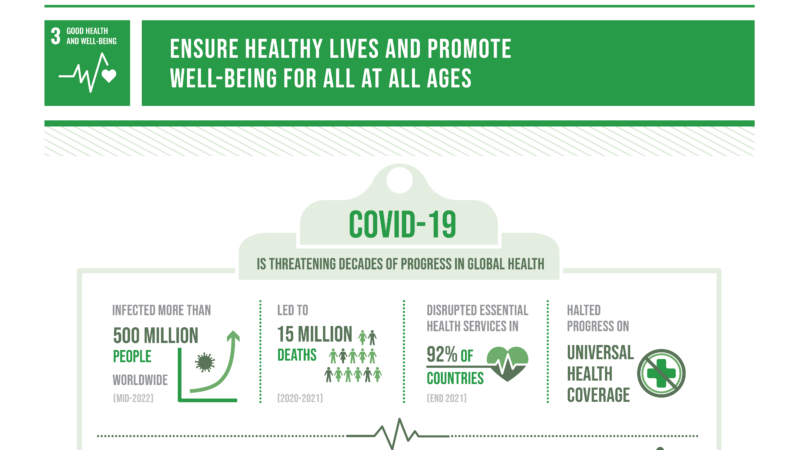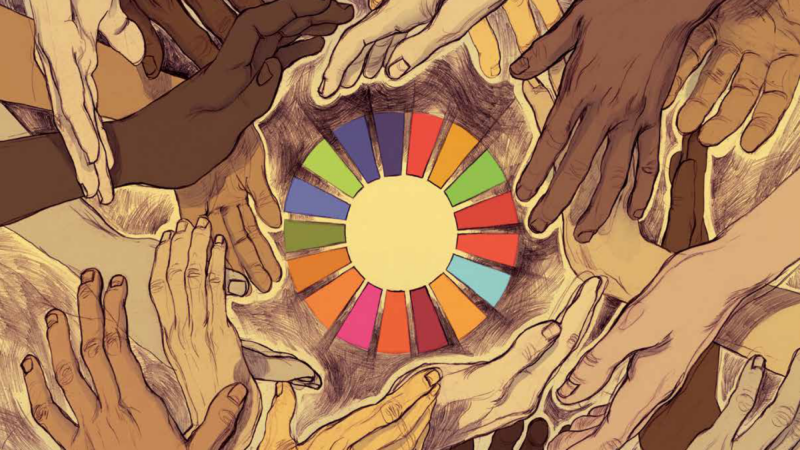Vector-borne
Dr. Raman Velayudhan: Combating Deadly Mosquitoes
Dr. Raman Velayudhan is a seasoned expert in the public health field and a relentless advocate for combating the global threat of mosquito-borne diseases.
Currently at the helm of the Veterinary Public Health, Vector Control, and Environment unit within the Department of Control of Neglected Tropical Diseases at the World Health Organization (WHO), Dr. Velayudhan’s impact is far-reaching.
Mosquito-borne Diseases & the Environment
Climate change and human activity are enabling the spread of mosquito-borne diseases, like dengue fever, to new places. Stanford infectious disease experts and disease ecologists discuss what we know and how communities can protect themselves from these changing disease threats.
Aedes aegypti: Beyond the Black and White
One look at Aedes aegypti gives an immediate impression of its menacing nature. The telltale dark and white bands on the mosquito’s legs and other body parts bring a sense of foreboding and hardship. Sleek, silent, and stealthy, Ae. aegypti is the primary vector for several important, debilitating, and sometimes fatal human diseases including dengue, Zika virus, yellow fever, and chikungunya. The species is cause for mounting concern on many levels, as its biology, behavior, and ability to adapt have made Aedes aegypti one of the most pervasive and daunting public health challenges in the modern world.
The first mosquito ever associated with the spread of disease, Ae. aegypti is also the most studied of all mosquito species.1 From its humble beginnings in the African wild to a footprint that spans the globe, this durable and opportunistic insect has become a formidable opponent of vector control efforts worldwide.
Dr. Peter Hotez: Fighting Neglected Diseases, One Shot at a Time
Dr. Peter J. Hotez is a physician-scientist who dedicates his career to fighting neglected tropical diseases and vaccine development. He is the Dean of the National School of Tropical Medicine and a professor at Baylor College of Medicine, where he also serves as the Co-director of the Texas Children’s Center for Vaccine Development (CVD) and the Texas Children’s Hospital Endowed Chair of Tropical Pediatrics.
Dr. Hotez is an internationally recognized expert in his field, leading a team and product development partnership for new vaccines for diseases such as hookworm infection, schistosomiasis, leishmaniasis, Chagas disease, and coronaviruses, which affect millions of people worldwide. He is committed to championing global access to vaccines, including leading efforts to develop a low-cost recombinant protein COVID vaccine resulting in emergency use authorization in India.
Vector-borne Diseases & Climate Change
Climate change creates new risks, particularly in the United States, for human exposure to vector-borne diseases (VBDs) — diseases which are transmitted to humans through the bites of insects (referred to as vectors) that carry the disease-causing pathogens. Common vectors include mosquitoes, ticks, and flies.
Climate change creates new uncertainties about the spread of VBDs such as the Zika virus, dengue fever, malaria, and Lyme disease by altering conditions that affect the development and dynamics of the disease vectors and the pathogens they carry.
Tracking the Global Burden of Vector-Borne Disease
The burden of vector-borne diseases (VBDs) is one of public health’s most pressing challenges. VBDs are caused by pathogens such as arboviruses (arthropod-borne virus), bacteria, and parasites that are transmitted to humans and animals through the bites of infected arthropods including mosquitoes, ticks, sandflies, and fleas, among others. According to the World Health Organization (WHO) , “vector-borne diseases account for more than 17% of all infectious diseases, causing more than 700,000 deaths annually worldwide”.
Beyond these broad statistics, attempts to quantify the global burden of VBDs is extremely challenging – for a number of reasons. At the highest level, even “burden” has an underlying complexity in public health terms: burden may refer to the number of cases of a given disease as well as the number of deaths.
Burden can also represent Disability-adjusted Life Years (DALYs), a measure that accounts for the long-term effects of disability among the afflicted, as well as the economic impact of disease from regions and countries all the way down to households and individuals. These economic impacts can be further scrutinized as reduced productivity among the populace, increased healthcare costs, and negative impacts on tourism; all of which can directly affect the GDP and economic growth of local and regional economies. And that’s just the beginning.
Study: Digitally Managed Larviciding
A new study has found that larval source management (LSM) – treating mosquito breeding habitats – can still be effective in malaria elimination operations, especially with the aid of new digital technologies. LSM has been replaced in Africa by long-lasting insecticidal nets (LLINs) and indoor residual spraying (IRS), but these methods are becoming less effective due to mosquitoes’ growing resistance to insecticides.
Breaking Down UN SDG 3: Good Health and Well-Being
The United Nations’ Sustainable Development Goal 3 (SDG 3) aims to ensure healthy lives and promote well-being for all. From reducing maternal and child mortality to combating infectious diseases, SDG 3 encompasses a wide range of health-related issues that are essential for building a sustainable planet.
In this infographic, we will delve deeper into the specific targets of SDG 3 and examine the progress made so far in achieving them. Join us as we explore the importance of good health and well-being, and the steps we can take to make it a reality for everyone.
Earth Day & Public Health: Unavoidably Connected
Each year on April 22nd, people and nations around the world celebrate Earth Day to raise awareness and promote action toward environmental protection and sustainability. Activities typically include community clean-ups and educational campaigns designed to promote sustainability in daily life.
The origins of Earth Day date back to the 1960s and a decade of growing enviro-consciousness brought about by the publication of Rachel Carson’s Silent Spring and a series of environmental disasters that climaxed with a devastating oil spill off the coast of California in 1969. Gaylord Nelson, a U.S. Senator from Wisconsin, organized the first Earth Day in 1970, when an estimated 20 million Americans took part in organized activities ranging from tree plantings to beach cleanups and teach-ins on college campuses.
Since those humble beginnings, Earth Day has become a global event – but amidst the tree plantings and landscape revitalization lies a subtle and yet direct connection between Earth Day and Public Health. Just as we depend on the natural environment for our survival, civilization creates and shapes a social and economic environment that greatly influences the health and well-being of our species.

